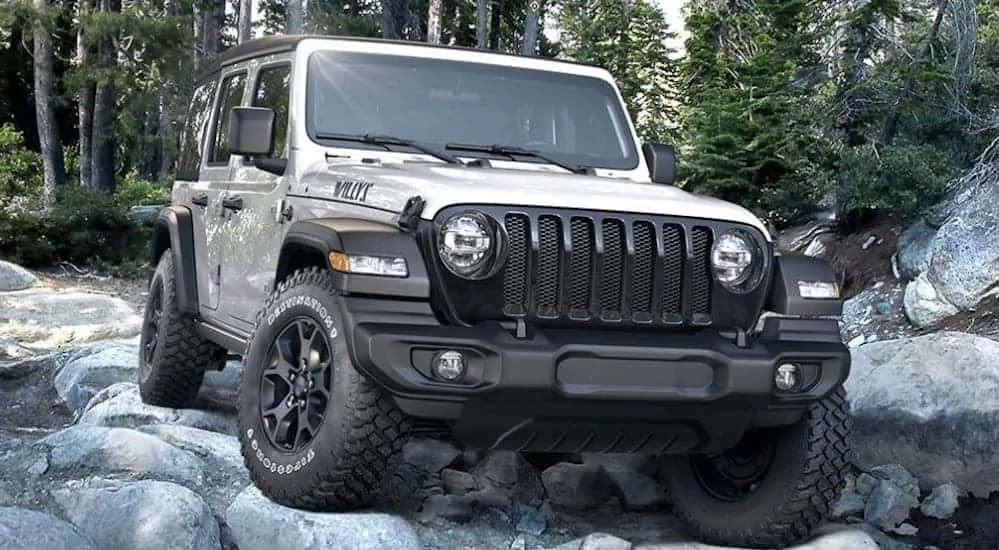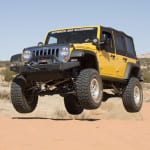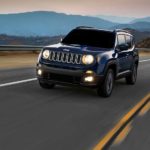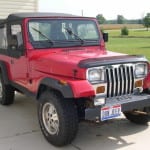There are many SUVs that promise a stellar and capable off-road experience. Four-wheel and all-wheel drivetrains are a dime a dozen across various automaker lineups, and so are off-road packages. But, few live up to the kind of instant capability and rugged power that the Jeep Wrangler has promised year after model year to their drivers. The Jeep brand is famous for being the best off the pavement and has proven its capability more than once in the past. That said, the Jeep Wrangler is changing, along with the rest of the Jeep family lineup. With promises of an electric hybrid powertrain and an announced focus for the on-pavement driving experience, many Jeep purists are concerned. The 2020 Jeep Wrangler introduced a lot of changes to this long-held classic off-road SUV, and we’re curious ourselves about what things have changed and what things have remained the same. For that reason, we’ll peel back the curtain and take a closer look at Jeep’s famous flagship Wrangler.
True to Form Through and Through
The Jeep Wrangler has been around for quite some time, and throughout all these years has done little in the way of changing its outward appearance; and for good reason. The Jeep Wrangler is styled off of the first Jeep Willy’s of old when Jeep was known for manufacturing army vehicles that tracked through battlefields across Europe during World War II. The 2020 Jeep Wrangler is a long way off from being a military vehicle, yet those roots still shine through in the rugged boxy design, iconic barred front grille, and the classic open-air design. On top of that, the Jeep Wrangler, no matter what trim you purchase, rolls off of the showroom floor ready for anything, which is something competitors can’t necessarily claim.
Starting at $28,295 MSRP, and offering a two-door or four-door body style, the Jeep Wrangler can be made to be quite simple should you wish it. Although, with five different trim levels to choose from, what you can do to the Jeep Wrangler jumps tremendously. Those five trim levels are the Sport, Sport S, Unlimited Sport, Sahara, and Rubicon, and like past models, the Jeep Wrangler can be customized beyond that with aftermarket parts and modifications. Which brings us to a huge benefit of driving the Jeep Wrangler, it is meant to be transformed into an off-road vehicle unique to your needs. From lift kits to lightbars and beefier off-road tires, the Jeep Wrangler is one of those vehicles that gets changed a lot after it’s left the showroom floor.

Power Fit for Trekking
As Jeep enters this new era of SUVs, they’ve begun to focus on performance on the pavement, as well as off. What’s resulted is new powertrains, with the promise of a full hybrid engine in the 2021 model. Although, it is worth noting that in typical Jeep fashion, every Wrangler rolls off of the factory floor with a 4×4 drivetrain, which is versatile, powerful, and practically unstoppable when equipped appropriately.
The base trim of the Jeep Wrangler is fitted with a 3.6-liter V6 engine that puts out 285 horsepower. This entry-level engine can be left with its standard 6-speed manual transmission or an automatic variant that makes things a bit easier on the pavement. This base engine is good, but it doesn’t provide stellar low-end torque, which is preferred by any off-road enthusiast. Fortunately, you can find that additional off-road prowess when you upgrade to the optional 2.0-liter turbocharged four-cylinder. It may offer less initial oomph with only 260 horsepower, but delivers the kind of low-end power some Jeep drivers have come to expect. And for those itching to give their tires a taste of the dirt, the Jeep Wrangler also offers a 3.0-liter turbodiesel V6 provides 442 lb-ft worth of torque, making it the preferred option for off-roading. A mild-hybrid option is available as well, which uses an electric battery and start/stop technology to save on fuel and provide greater power delivery when traveling at lower speeds.
Beyond the engine, the Jeep Wrangler can be outfitted with some serious gear. Step up to the Rubicon trim, and you’ll get a robust suspension system, locking differentials, 33-inch tires, and disconnecting sway bars. The result is a Jeep Wrangler that is trail-rated from the start, something that competitor off-roaders struggle to claim so confidently.
Rugged on the Outside, Comfy on the Inside
The Jeep Wrangler may be a rough and tumble SUV, but it offers plenty of comfort on the inside. While rear passengers in the two-door model may struggle to get comfortable, the four-door variant acts as the sweet spot of rugged aesthetic and daily practicality. The four-door 2020 Jeep Wrangler starts off with 32 cubic feet of cargo room, and if you fold those rear seats down, you’ll get 72.4 cubic feet of cargo space to utilize to its full potential. Available with either cloth or leather upholstery, both materials are pretty durable and wash easily.
In the 2020 Jeep Wrangler, it’s clear to see that Jeep has made an effort to better modernize their flagship model. While still a bit behind the curve, it is a huge upgrade compared to last year’s model. The baseline Sport model gets USB charging ports and keyless ignition, however, it has also been built without air conditioning and the lack of power windows. While this may be a great thing for Jeep purists, it feels a little dated to everybody else. Fortunately, upgrading the Jeep Wrangler to something a bit more modern doesn’t take much in the Sport S. This second tier model comes with an infotainment display that can be integrated with Apple CarPlay and Android Auto, and yes, it comes with air conditioning and power windows.
Move further up the trim levels to something like the Sahara, and you get some interior features that are pretty competitive. In the Jeep Wrangler Sahara, you’ll only have the option of a four-door body style, but you’ll get a bigger infotainment screen, a 115-volt power outlet, and two USB ports, which is a fair upgrade in our book. The Rubicon model, on the other hand, doesn’t offer much more in the way of interior comforts and instead puts focus on off-road gear. Features like an upgraded suspension, a power winch, and locking differentials are bound to satisfy any dirt-loving off-roader.
What We Think of the 2020 Jeep Wrangler
The Jeep Wrangler is an outlier, plain and simple. Sure, it may not live up to the expectations of other similar SUVs, it has always existed within a league of its own, and it has succeeded in doing so. Even as Jeep pivots to focus on on-pavement driving, they continue to cater to their base audience of drivers who want something that excels at trail-running and exploring the most remote corners of the world. For that reason, we have to give the Jeep Wrangler praise, and can’t view it through the same lens that we view other comparable SUVs. We’d like to see more in the way of modern amenities in the entry-level Jeep Wrangler, especially for that somewhat high asking price, but it is a small complaint when compared against the kind of performance you’re guaranteed right off of the bat.





